Land iguanas and cactus of the Galapagos
Today we explore a new island in the Galapagos in search of land iguanas. Read an overview of our Galapagos series as well as the previous post on sea lions.
Our hike for the day
Today, we arrive at Cerro Dragon on Santa Cruz island. The day starts out early with an exploration walk. The feature here are the land iguanas. The rains had just come which really greened up the area. But since we are at the end of the rainy season, ponds were starting to recede. So the path was entirely dry - not so 2 weeks ago our guides told us. During the wet season the part of the path is covered with water or extremely muddy. Many of the plants were still in flower however for our walk.
-
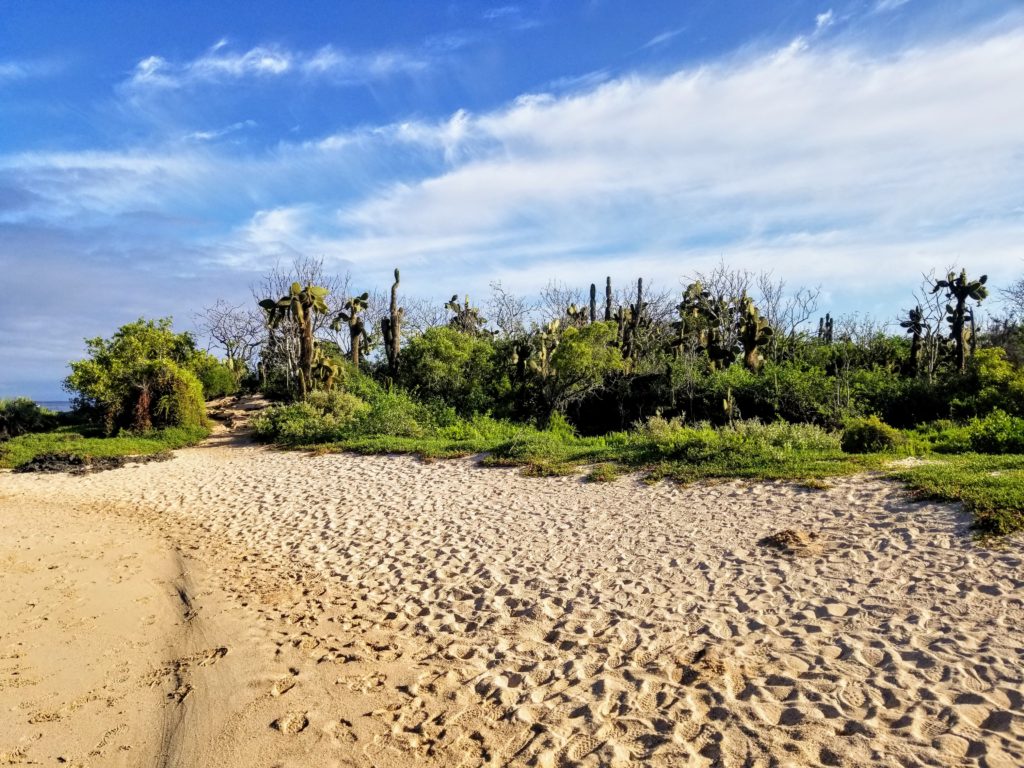
Santa Cruz island beach -
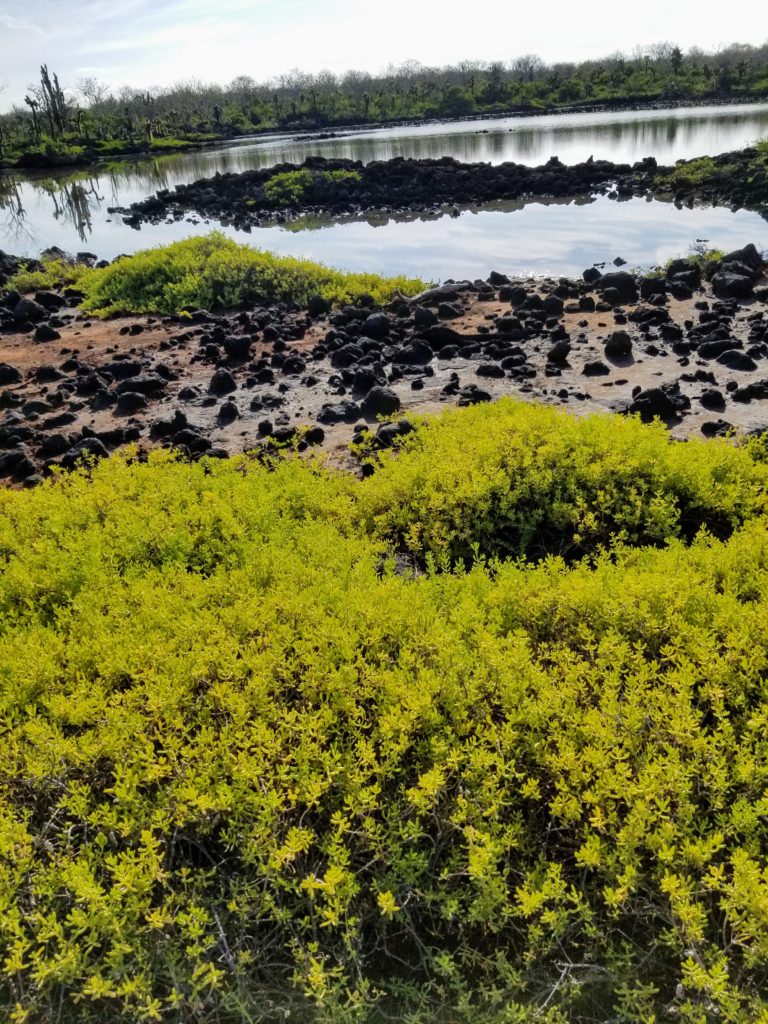
In wet season, this pond is twice this size -
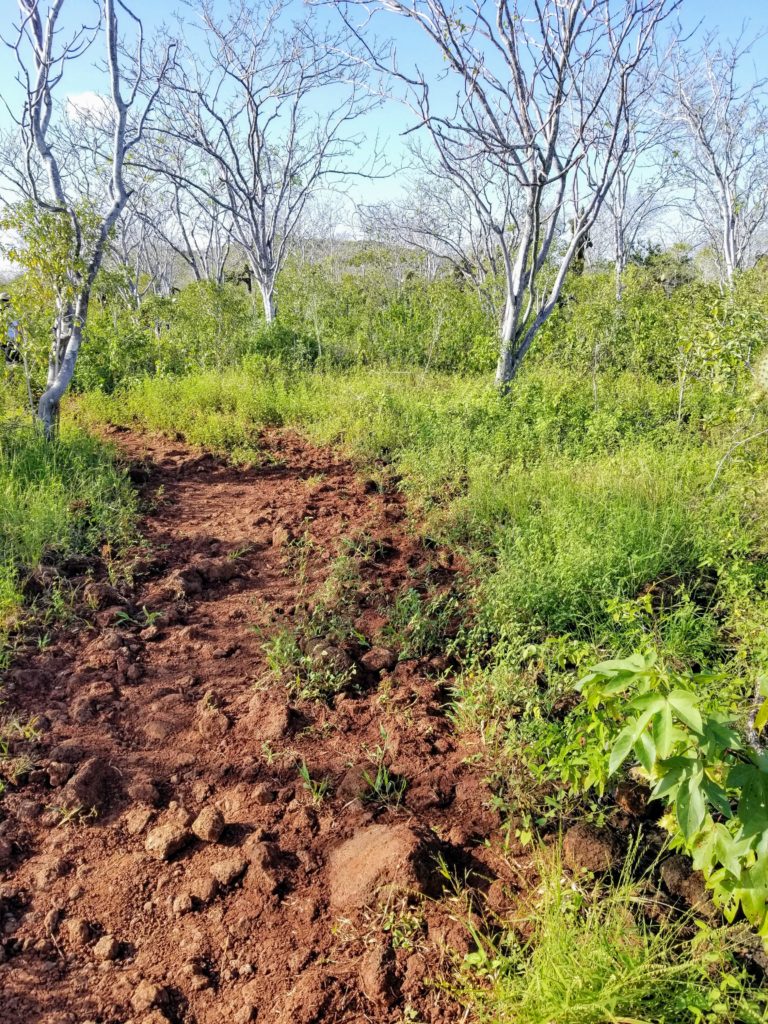
Our hiking path to see land iguanas -
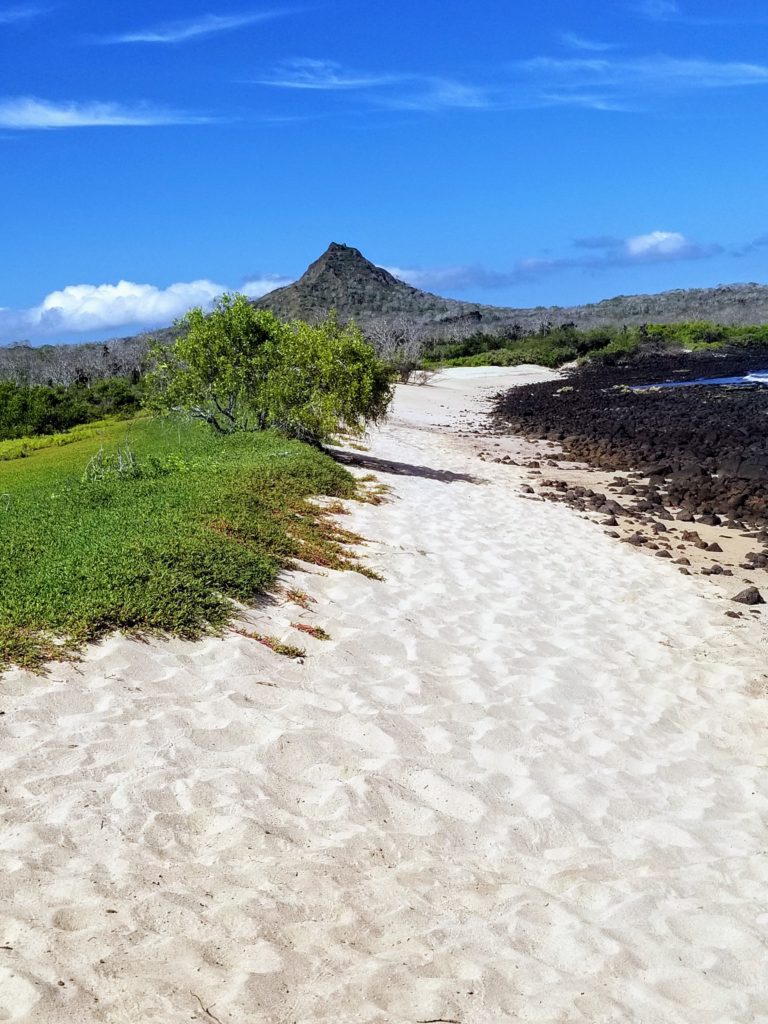
Nice view of lava, crushed seashell beach and vegetation on Santa Cruz
Spotting land iguanas
The terrain consisted of lava rock, a white sandy beach (coral, not quite as powered as yesterday’s beach, it’s a little newer), lots of green plains, a briny lagoon (flamingos sometimes frequent it) and a few hills, one of which our path leads to. Along the way we ran into 4 land iguanas. One of the larger males was quite colorful, ready to attract a mate. The iguanas were docile now but later they will be more active and aggressive as mating season gets underway.
-
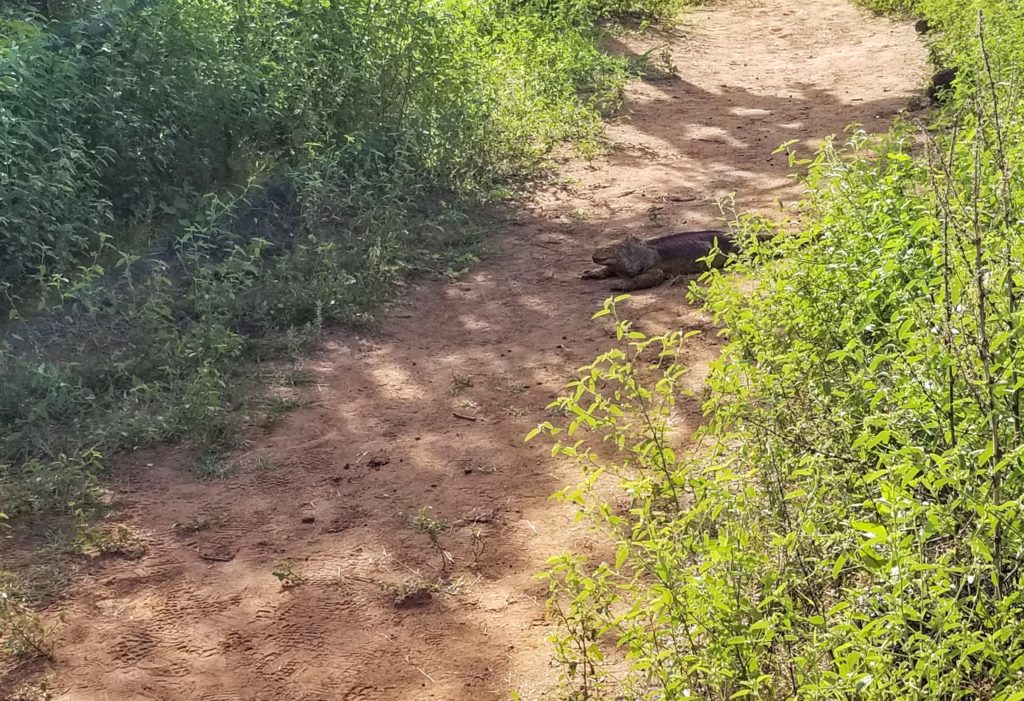
A Land Iguana crossing our path -
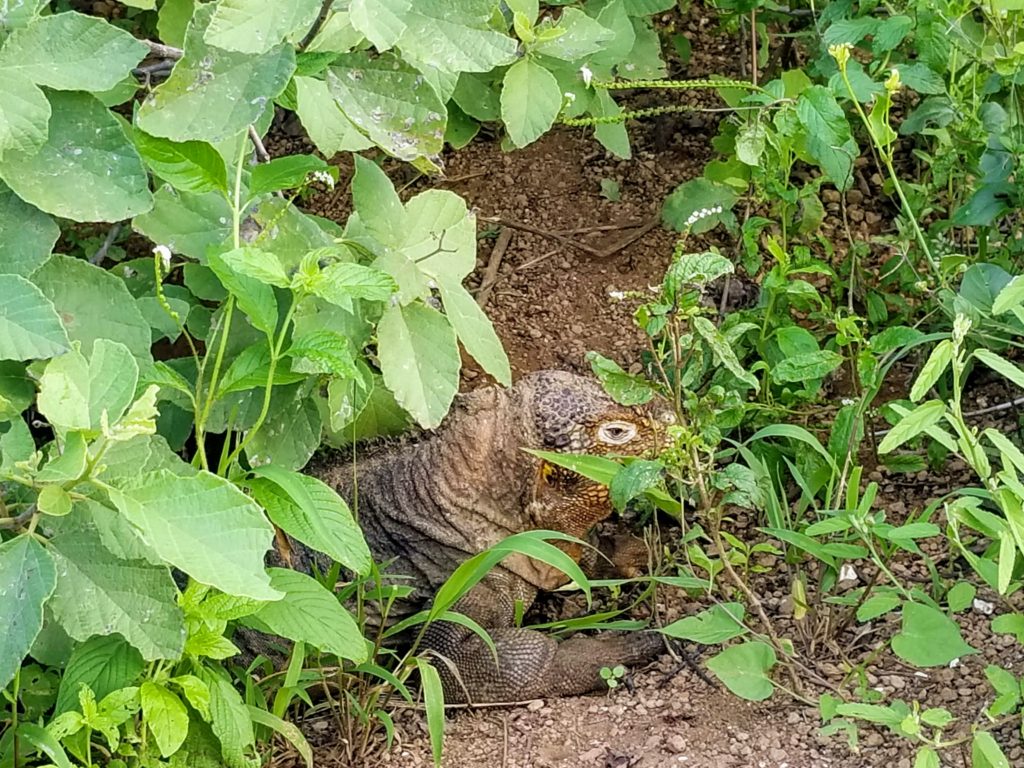
Land Iguana peeking out -
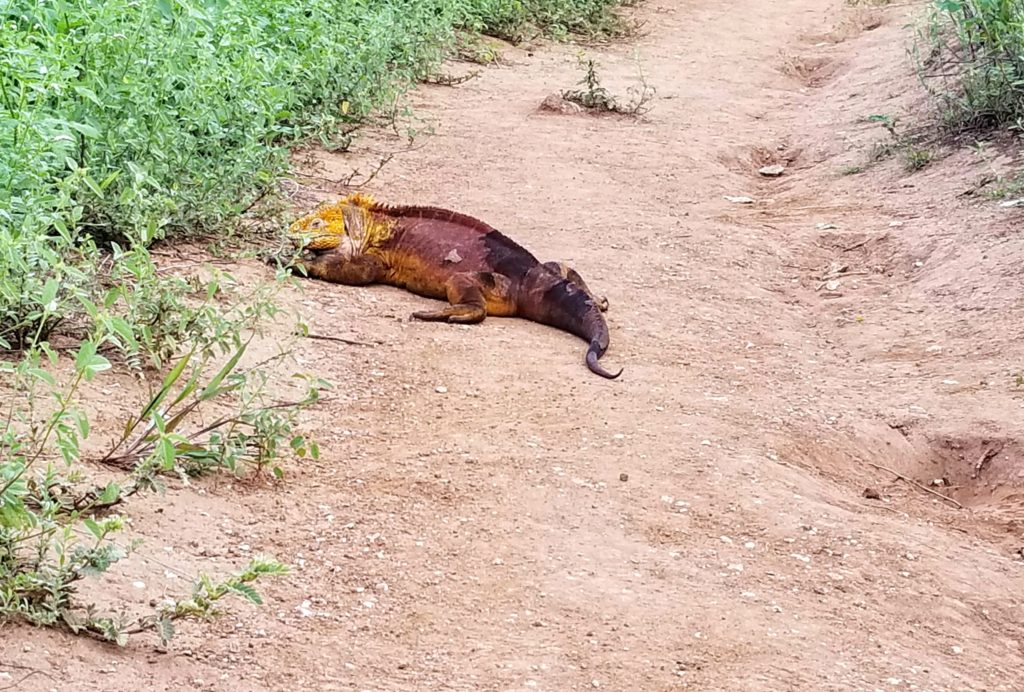
A stationary Land Iguana in full color -
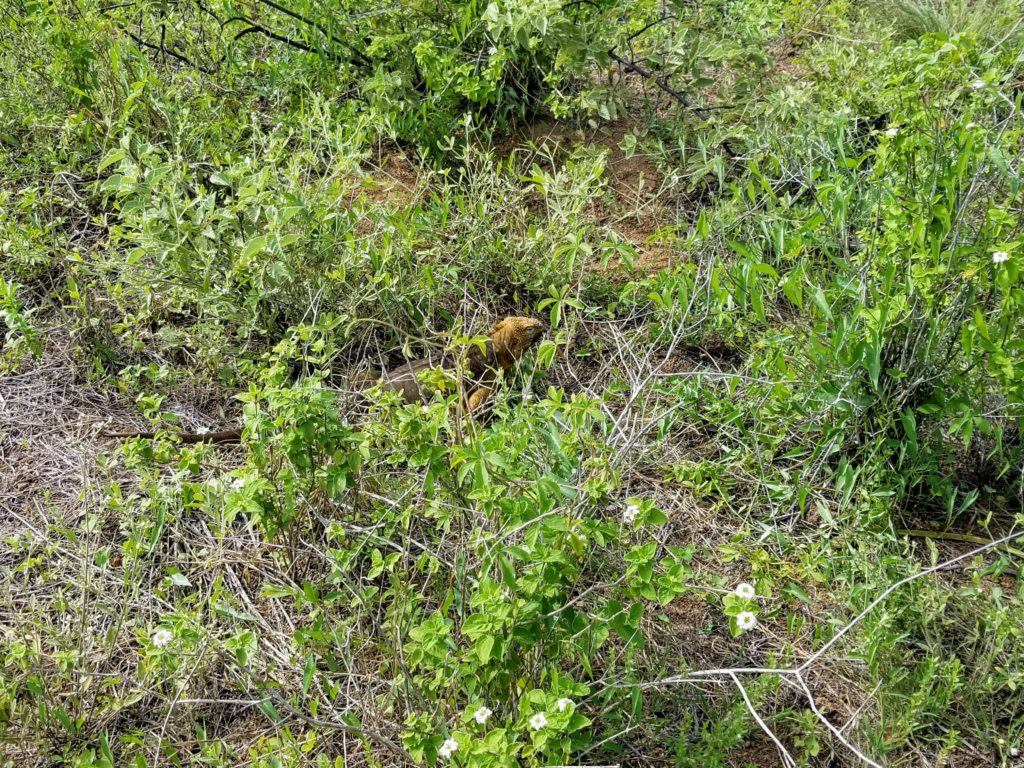
Land Iguana walking away
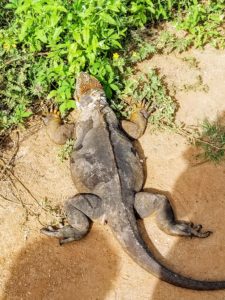
These land iguanas are larger than their marine cousins (see our Marine iguana post). Their snouts are longer while the marine iguanas are snub nosed. And of course, the colors are very different with the marine iguanas being a grey lava color. The land iguanas like dry arid land and generally avoid water if possible. And the land iguanas are much more solitary - we never saw any more than a single iguana at one time. Recall the marine iguanas pile up together for warmth. They have a life span of about 60 years, assuming they survive adulthood.
Galapagos Land Iguana
The view from the top
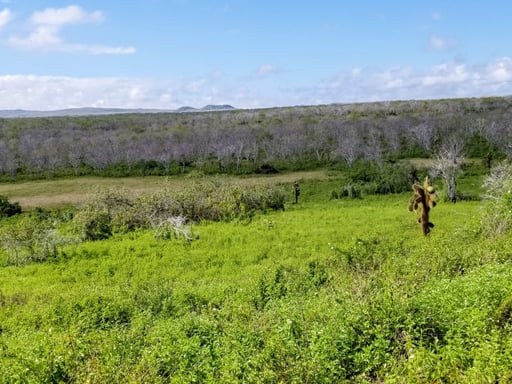
From the summit, we could see many other islands. Our guide explained that even islands that are 5 to 20 miles away, have developed different species. Not because they are separated but because they have different climates and conditions. From rocky to sandy, cactus to deciduous, lagoon to dry, low to high elevation, recent vs ancient land masses the variety allows each island’s species to adapt in their own way. You could see some of the volcanic caldera from the top as well.
On the trail, we also saw a great blue heron, a stilt bird and some marine iguana. And lots of finches.
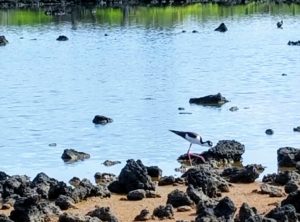
Relaxing
The rest of the day, for the first time, is spent relaxing. There’s an optional snorkeling trip today to Guy Fawkes that we decide to skip. It’s a 20 - 30 min zodiac ride away and the conditions were described as "challenging and unpredictable with strong and variable currents." And there really wasn’t any special fish we were expected to see.
So we decided to simply collect our snorkeling equipment and wet suit and bring it back to the cabin. Dave had decided to bring his own long sleeve wet suit which really helped. Not only did it keep him warm but really helped buoyancy. And we always bring our prescription snorkel masks. There’s a lecture at 11 am on The Galapagos human history time line.
Lunch and more relaxing
We then had lunch while the ship cruises to Bachas, Santa Cruze. There’s there’s a short nature walk and time on the local beach. We decide to blow off the beach time and just relax up on deck. No sense ruining our relaxing day with an actual excursion! We spent the rest of the day reading and talking and maybe we had a nice cold drink or two.
Here's two scenes that capture our afternoon.
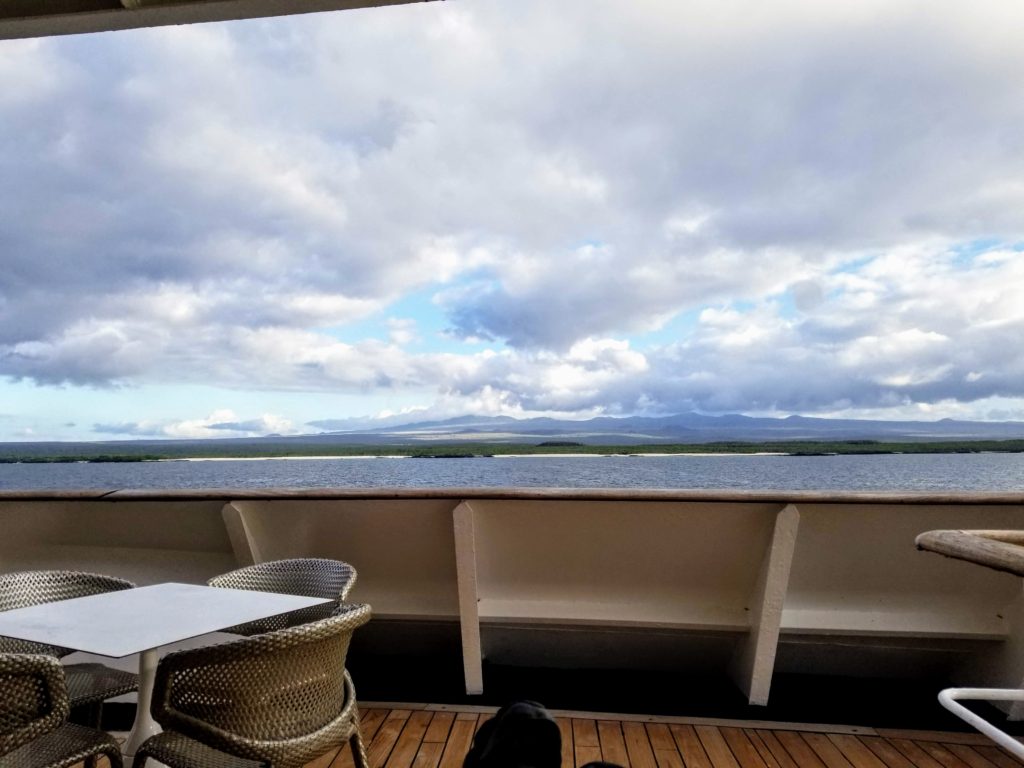
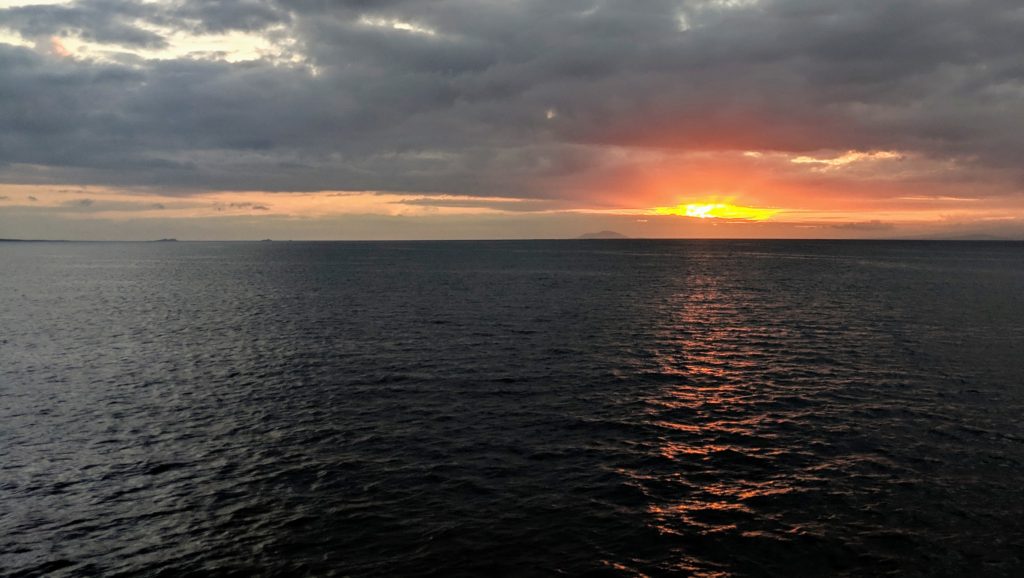
Everyday ends on a high note:

Click to know more about Galapagos land iguanas
Next: Tomorrow is our last full day in the Galapagos where we will see the famous Galapagos giant tortoise.
